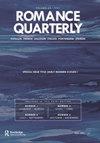“The Mystery Unsolved, Without Any Attempt to Solve It”: Detective Fiction and Waywardness in Norah Lange’s People in the Room
IF 0.2
3区 文学
0 LITERATURE, ROMANCE
引用次数: 0
Abstract
In 1950, Argentinian author Norah Lange published her experimental novel Personas en la sala [People in the Room]; she would later describe the novel (which is told from the perspective of an adolescent girl who spies on her neighbors) as “pure espionage.” This article picks up on this remark and other elements in the text to situate the novel in the context of the detective genre, and specifically as a domestic re-writing of Edgar Allan Poe’s proto-detective narrative “The Man of the Crowd” (1840), famously described by Walter Benjamin as an “X-ray picture of a detective story.” In situating the novel in this way, the article seeks (i) to show how Lange’s novel stands as the culmination of a decade-long series of homages to Poe by Argentinian writers, beginning with “El jardín de senderos que se bifurcan” (1941) [“The Garden of Forking Paths”] by Jorge Luis Borges, and that includes works by Adolfo Bioy Casares and Silvina Ocampo; (ii) to assess the novel in the context of queer theory, and more generally as a genealogically “wayward” text both in terms of its relationship to the evolution of the detective genre and its deviant attitudes toward family, reproduction, and heredity; (iii) finally, to situate the novel in the context of the rising homophobic panic that characterized Argentina under the Perón government throughout the late 1940s.“未解之谜,未解之谜”:诺拉·兰格《房间里的人》中的侦探小说与任性
1950年,阿根廷作家诺拉·兰格出版了她的实验小说《房间里的人》;她后来将这部小说(从一个监视邻居的青春期女孩的角度讲述)描述为“纯粹的间谍活动”。本文从这句话和文本中的其他元素入手,将小说置于侦探类型的背景下,特别是作为埃德加·爱伦·坡的原型侦探叙事小说《人群中的人》(1840)的国内改写,沃尔特·本雅明(Walter Benjamin)曾将其描述为“侦探故事的x光照片”。以这种方式放置小说,文章试图(1)展示兰格的小说如何成为阿根廷作家十年来一系列向坡致敬的高潮,从豪尔赫·路易斯·博尔赫斯的《路分叉的花园》(El jardín de senderos que se bifurcan, 1941)开始,包括阿道夫·比奥伊·卡萨雷斯和西尔维娜·奥坎波的作品;(ii)在酷儿理论的背景下评估这部小说,更广泛地说,它是一部家谱上“任性”的作品,既包括它与侦探小说类型演变的关系,也包括它对家庭、生殖和遗传的反常态度;(iii)最后,将小说置于20世纪40年代末Perón政府统治下的阿根廷不断上升的恐同恐慌的背景下。
本文章由计算机程序翻译,如有差异,请以英文原文为准。
求助全文
约1分钟内获得全文
求助全文
来源期刊

ROMANCE QUARTERLY
LITERATURE, ROMANCE-
CiteScore
0.30
自引率
50.00%
发文量
18
期刊介绍:
Lorca and Baudelaire, Chrétien de Troyes and Borges. The articles in Romance Quarterly provide insight into classic and contemporary works of literature originating in the Romance languages. The journal publishes historical and interpretative articles primarily on French and Spanish literature but also on Catalan, Italian, Portuguese, and Brazilian literature. RQ contains critical essays and book reviews, mostly in English but also in Romance languages, by scholars from universities all over the world. Romance Quarterly belongs in every department and library of Romance languages.
 求助内容:
求助内容: 应助结果提醒方式:
应助结果提醒方式:


